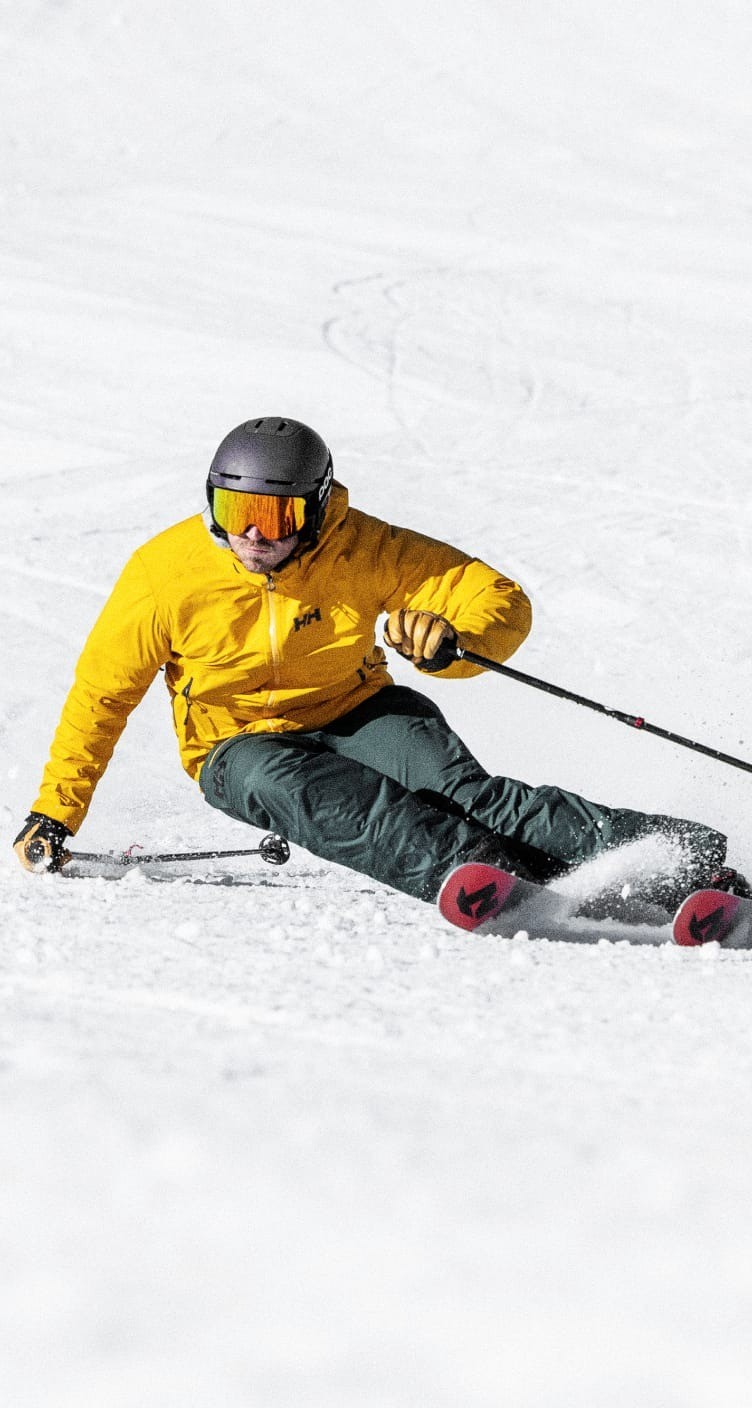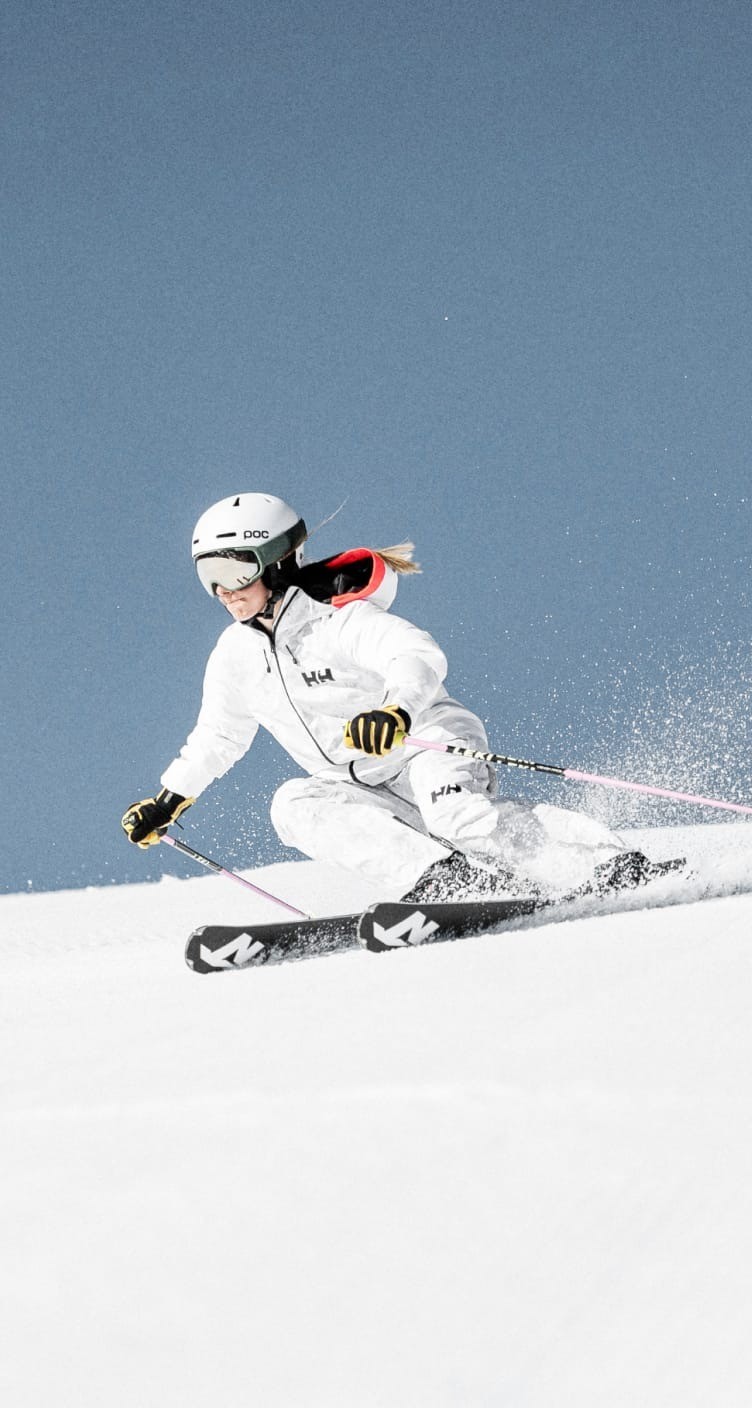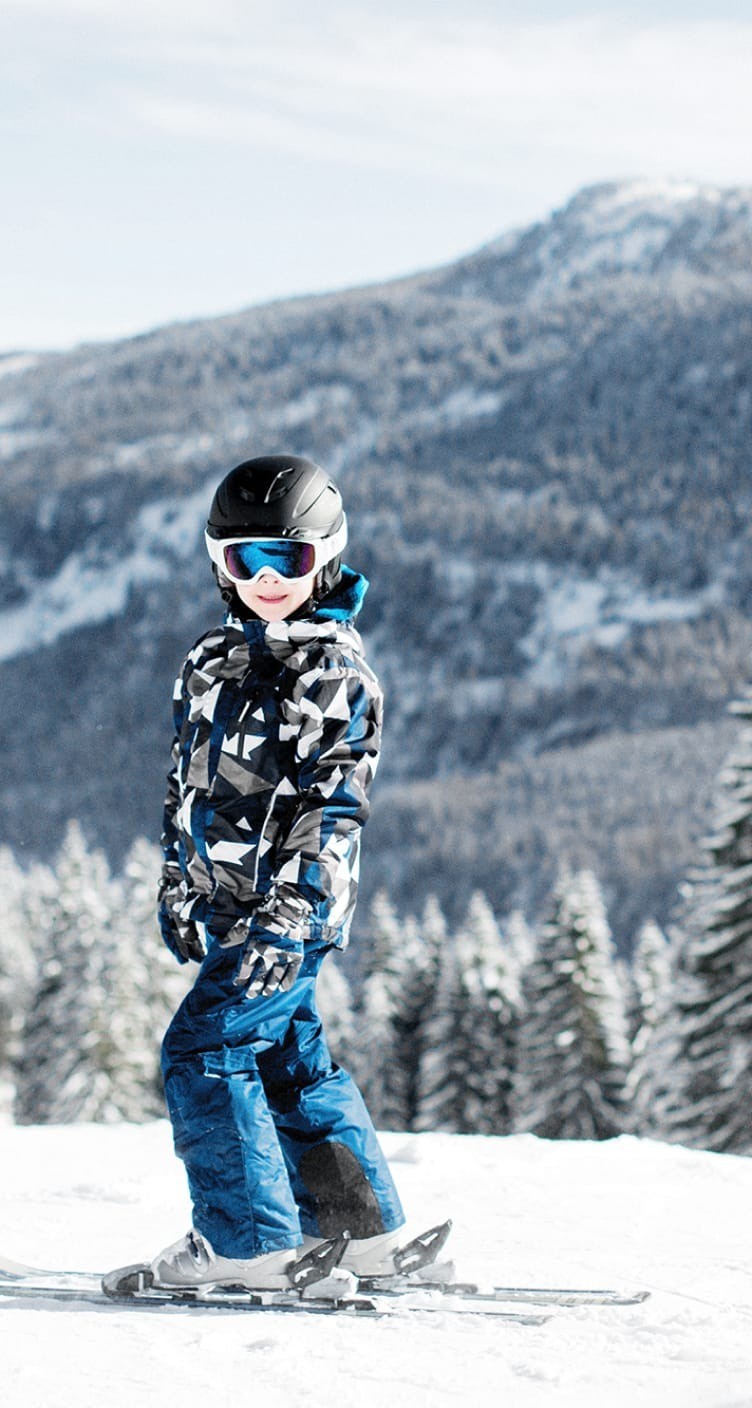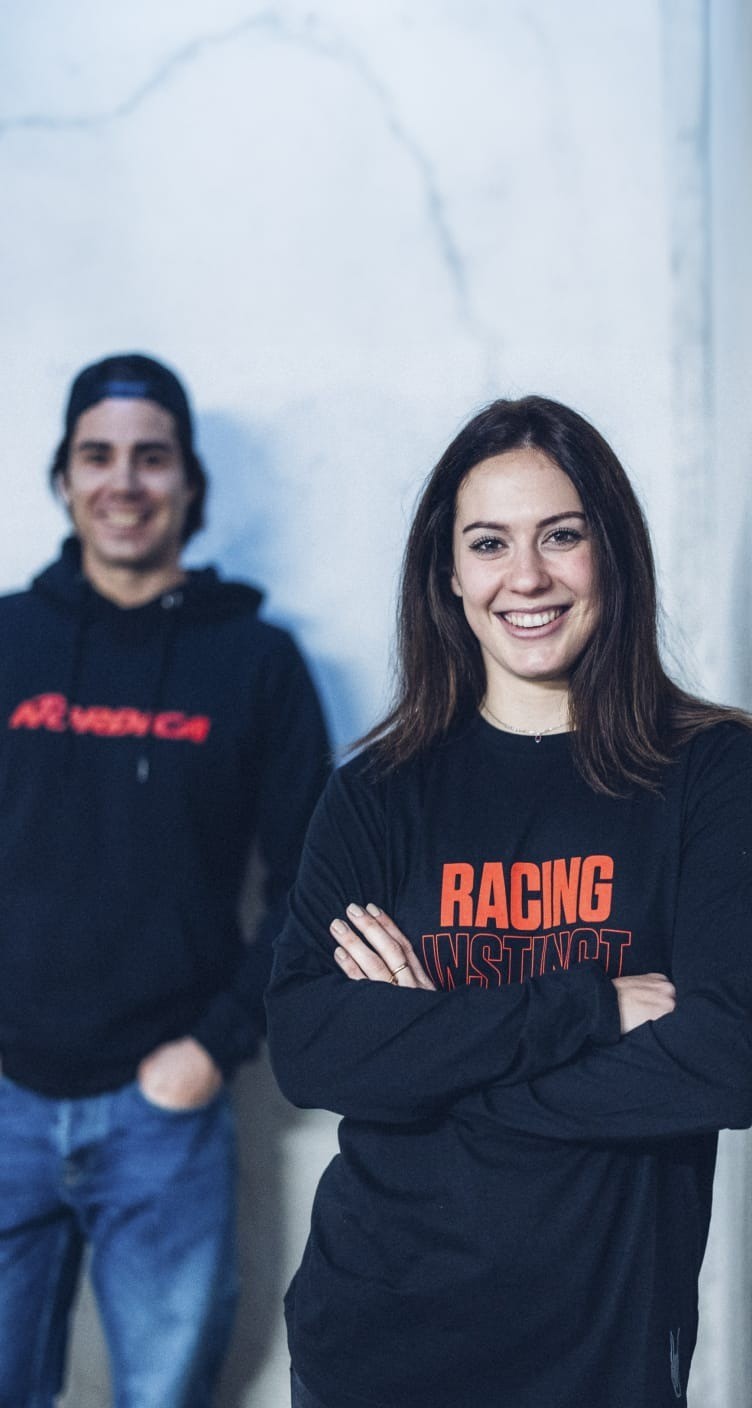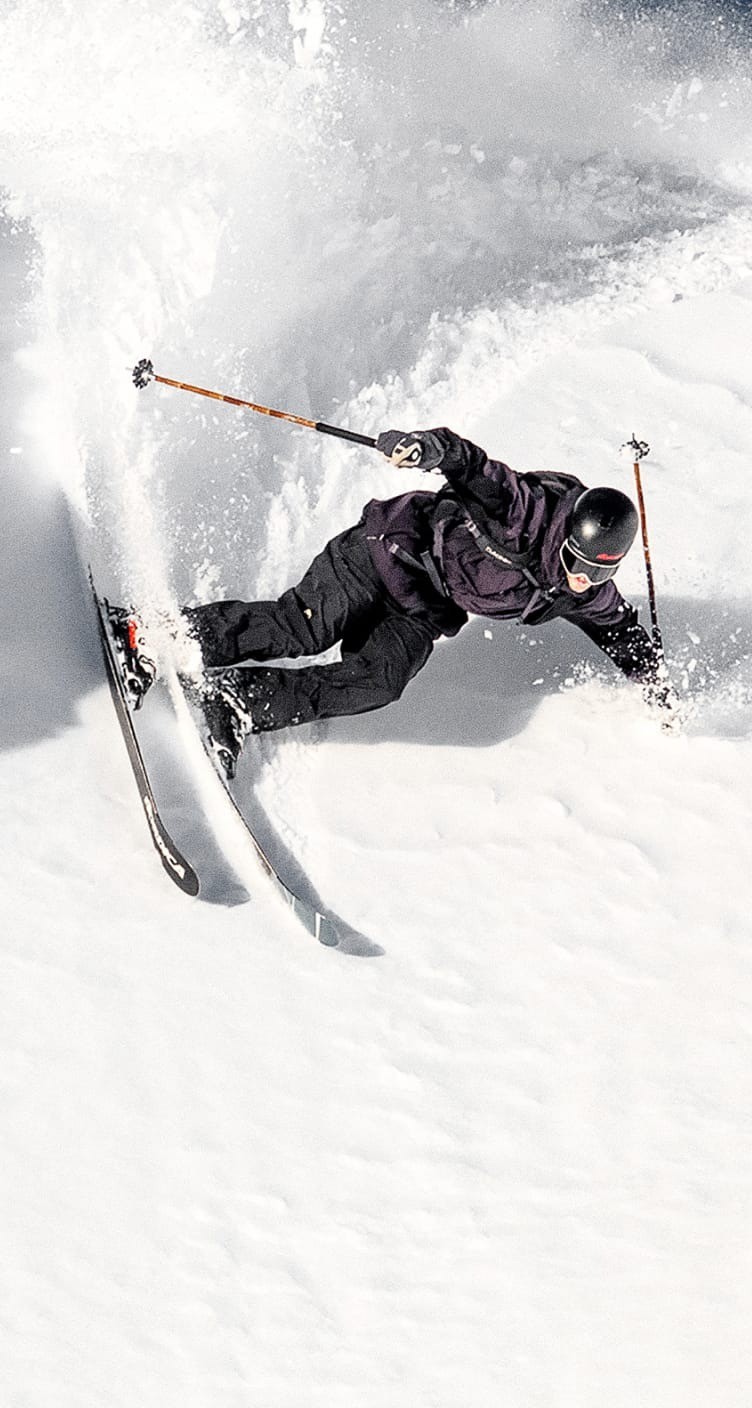Recycle Your Boots
Full Circle - Back To Slope

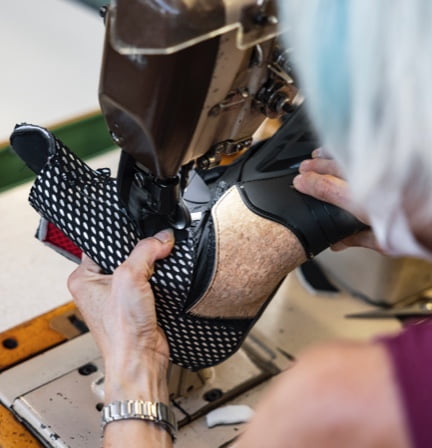
How we recycle ski boot liners into LISKI safety padding
In the three years leading up to the official launch of our ‘Recycle Your Boots’ (RYB) campaign, we’ve had to overcome many challenges. Most of them were in relation to the immense complexity of how a ski boot is made.
But of all the components, the ski boot liner deserves a special mention. Because this is where we overcame the greatest difficulties. A ski boot liner, like the rest of a ski boot, is designed with comfort, fit, and downhill performance in mind – and not recyclability. In fact, liners are made up of a vast number of individual components, such as polyurethane foam in different densities, and fabric that is stitched and glued together.
It soon became clear that recycling liners and making new boot liners out of the material was not going to be an option. And so, we had to come up with some new ideas.
First, we thought about making the recycled material into seating for ski boot fitting
areas within our RYB retail partners’ stores.
We wanted to make something useful out of this repurposed resource, something that also
gave the project greater visibility.
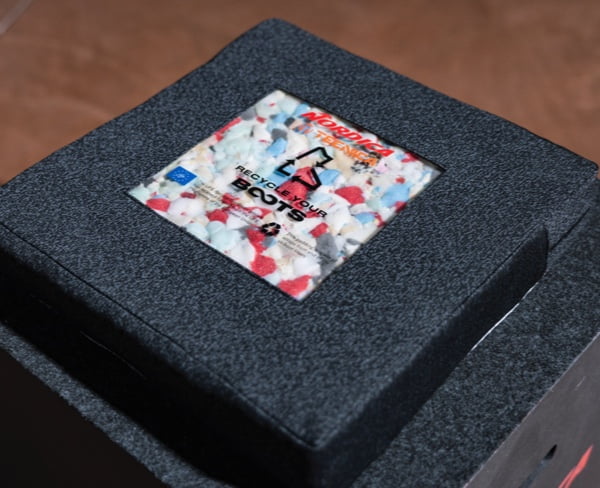
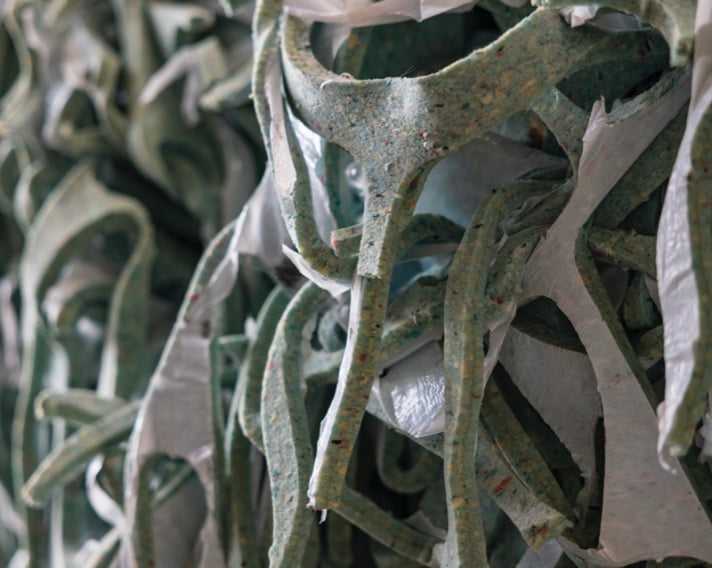
With that in mind, we started looking for a manufacturing partner to team up with. And we were lucky enough to find one just round the corner from us here. Re Mat, is a leading end-of-life mattress recycling company based near Turin, in northern Italy. Thanks to their expertise we were able to test out different processes and solutions for recycling not only old ski boot liners that had been collected through our RYB project, but also for using the foam remnants from their initial manufacture at our facility in Hungary
In the same way as recycling ski boot shells, the liner process begins by shredding the foam
into large flakes.
These flakes are then washed, and finally regenerated and compressed into a solid foam
compound.
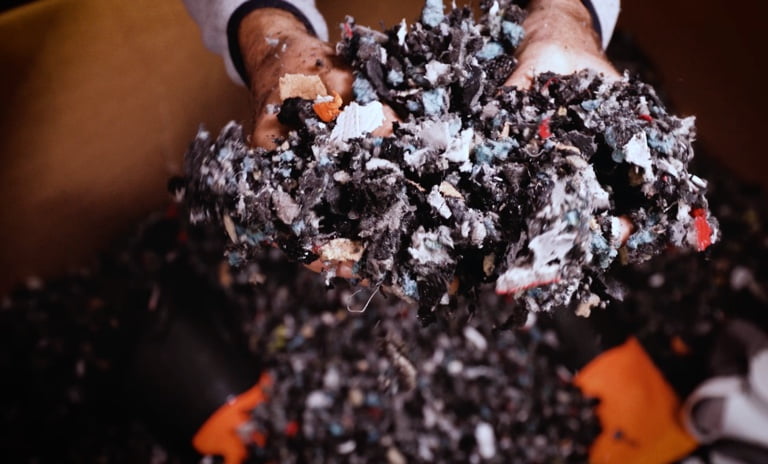
As soon as we got our hands on the first recycled foams blocks, we got to thinking bigger, and asked ourselves: “ Is there a way these old ski boot liners could end up back on the ski slopes, or connected to them somehow? What about safety matting along the pistes? “
Since we were already exploring options for using recycled plastics to make slalom poles with the firm Liski, it made sense to also explore with them ways of using our recycled foam to make more sustainable safety padding for ski areas.
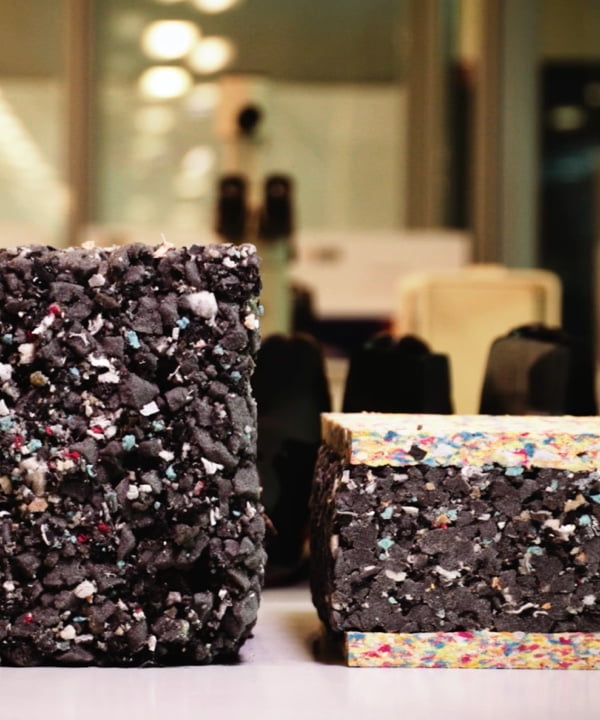
Less obvious it has been the process to find the right recipe and the balance between
conventional polyurethane and a granulated ski boot liner to match the desired ability to
absorb shocks and keep the weight down.
A protection mats, differently from a pillow, it’s a safety items and it must meet severe
tests and certifications requirements, beside to be resistant and easy to carry around in
the outdoor.
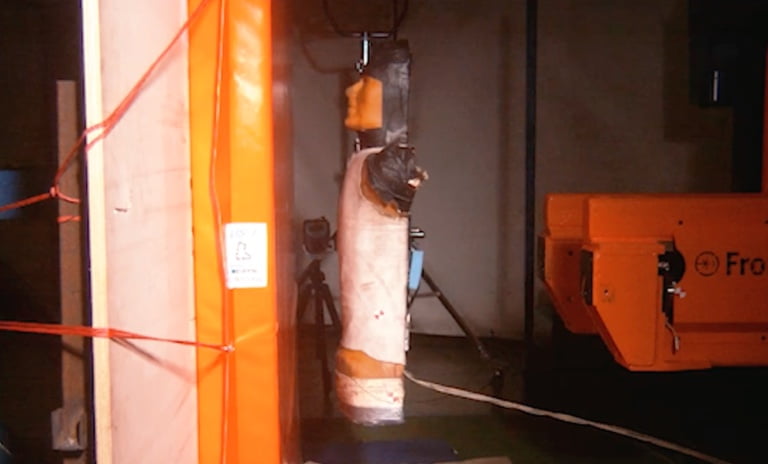
What was less clear however, was finding the right blend of conventional polyurethane and foam made from granulated ski boot liners that had the right level of impact absorption while keeping weight down.
Safety padding differs from regular foam matting because it must meet stringent safety criteria and undergo certification processes. Plus, it must also be weather resistant, durable, and easy to carry.
Re Mat helped finetune the process by separating out the softer elements of the
liners
from the more rigid ones as much as possible and then re-granulating them into a
finer
flake.
The solution was to use a sandwich construction method, with a recycled layer of
foam
between two conventional polyurethane foam layers.
Called the Liski Greenmat, 70% of its total weight (and approximately one third of the total volume) is made up of recycled ski boot liners, and crash tests carried out at a CSI-certified laboratory in Brembate, northeast of Milan, show that its shock absorption performance is even better than traditional safety padding.
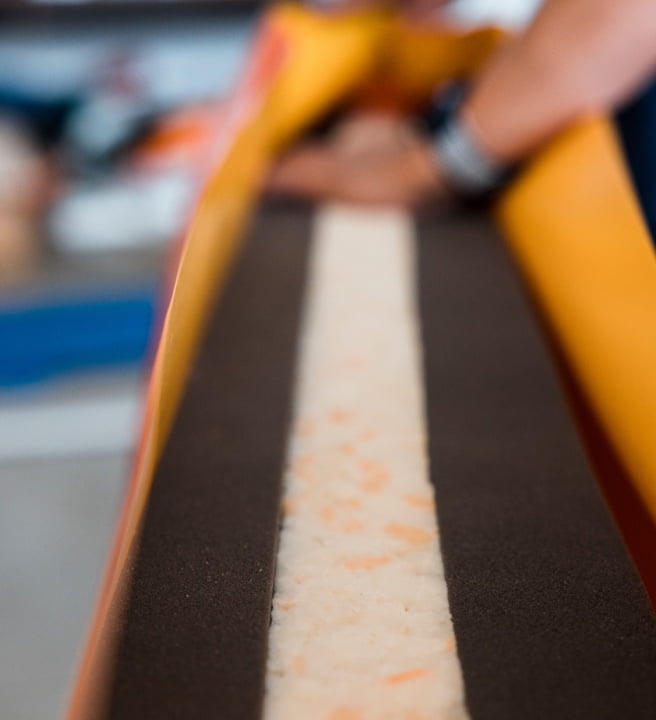
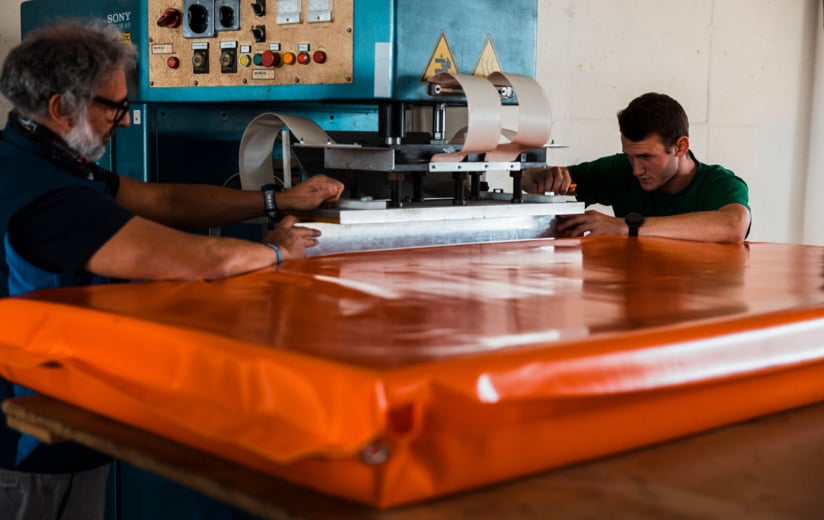
This whole process has been a wonderful opportunity to demonstrate how overcoming huge challenges can lead to clever innovation and more sustainable results. Sustainability is a challenge we all face, but however difficult the challenges we should not be limited by seemingly impossible undertakings.
Collaboration between different organizations and their different expertise can accelerate the change towards a better, more circular future – with lower energy consumption and fewer emissions. From the ski slopes, back to the ski slopes.


